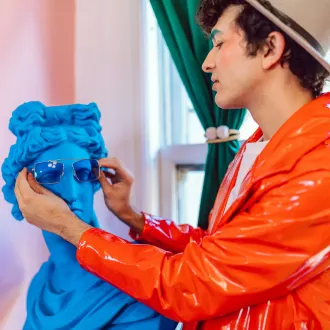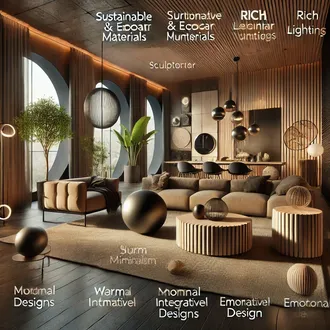Transcription Color combinations (I)
After knowing the preferences of the clients, as well as the possible psychological and symbolic repercussions that colors have on their moods, you should focus on selecting a harmonious color scheme that adapts to the functions and characteristics of the space (such as its size, the amount of natural light it receives, its temperature - warm or cold -, etc.).
The choice of colors, although it has a high dose of personal taste, should not be done intuitively because it can be unsuccessful. In this presentation we will begin to study a set of basic rules -the result of the study and experience of painters over the centuries- that will allow you to combine colors in a safe way to obtain excellent aesthetic results.
The first tool you must master to understand the possible combinations of colors, their harmonies and contrasts is the color wheel or chromatic circle.
The color wheel
The color wheel or chromatic circle is a sequential and progressive structured representation of the colors that make up the visible spectrum. Theoretically, color wheels should include an infinite number of colors, but in practice, they have about 12 colors.
The chromatic circle shown in the figure is based on the traditional model, where 12 colors are represented and classified as follows:
- Primary colors: red, blue and yellow.
- Secondary colors: violet, orange, and green.
- Tertiary colors: are those formed from the mixture of primary and secondary colors: orange red, orange yellow, greenish yellow, greenish blue, greenish blue, violet blue and purple red. Page break
Other concepts derived from the chromatic circle
Complementary colors are those that are in direct opposite places on the color wheel. Complementary colors generate harmony by contrast.
Close complementary colors: are the two colors that are on either side of the complementary color.
Analogous colors: Analogous colors are the colors found on either side of a key color on the color wheel. Analogous colors generate harmony by common traits.
Color harmony
The colors of objects and interior walls interact with each other, mutually altering their attributes - their shape, dimensions, etc., enhancing or dulling their presence in the room. To achieve the proper management of different colors in an environment without overloading it, we must devise attractive harmonies between them.
Color harmony is the way of combining the colors of wall surfaces and objects in an interior in a balanced way, to achieve an integral image of the room. It is generally considered that color harmonies should be achieved by using three colors: a dominant, a tonic and a mediation color.
The dominant color is the one we select for the largest surfaces -main walls, ceiling and floor-. It is recommended that it be the most neutral color of the three, so that it functions as a background color for the rest of the elements.
The tonic color is the one that we will use in smaller surfaces but of great prominence -fragments of walls, large furniture, carpets-. It must have higher chromatic intensities -greater tone and luminosity-.
The mediation color is the one used in smaller surfaces, details and decorative accessories -pictures, cushions, ornamental plants- in order to generate points of interest and balance between the dominant color and the tonic color. Its chromatic intensities should be close to those of the tonic color, even some small-scale elements can have the most intense color of the composition.
color combination 1




